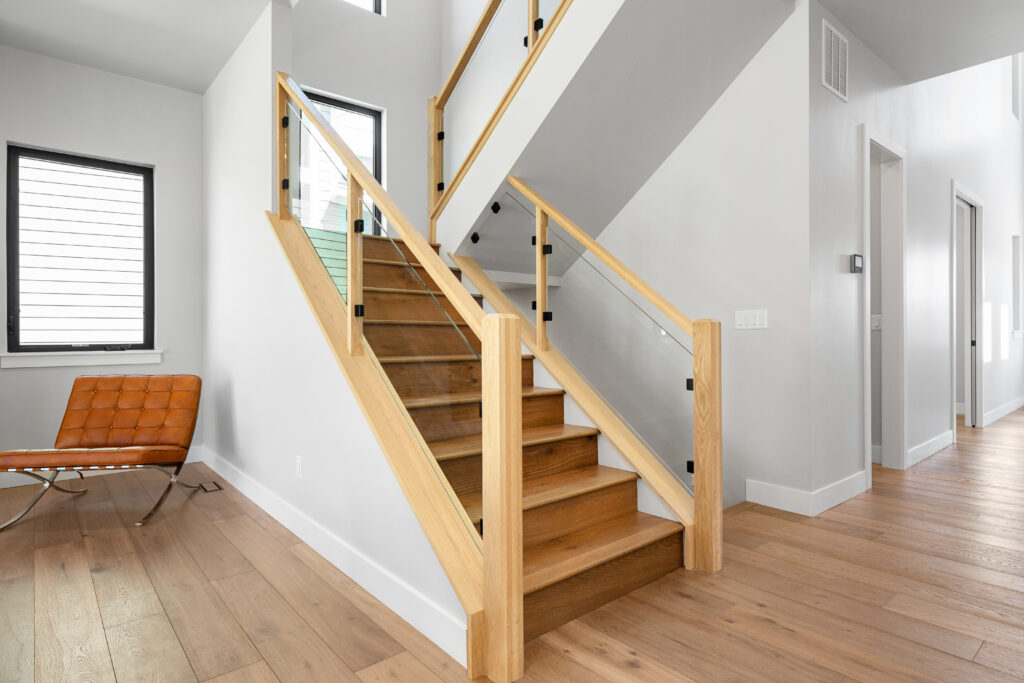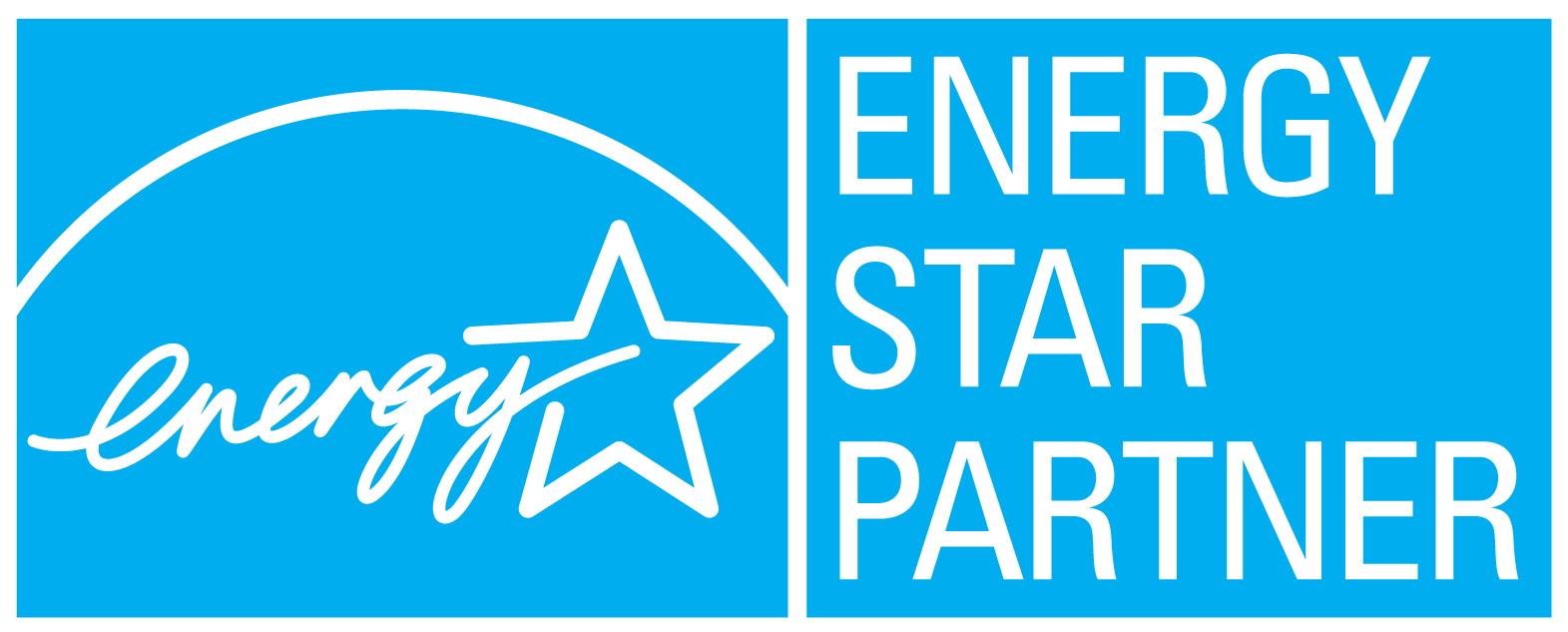Colorado is home to a growing sustainability movement that resonates through every aspect of life, including eco-friendly interior design trends. This approach not only reflects the state’s environmental values but also promotes a healthier, more sustainable lifestyle.
If you’re preparing to build your own custom home, you can be proactive with your design to incorporate the most sustainable materials and layouts from the beginning. Let’s explore the latest eco-friendly interior design trends shaping Colorado homes and walk through how to incorporate sustainable interior design into your custom home.
Current Sustainability Trends for Modern Homes
Many homeowners in Colorado are incorporating the following sustainable practices to make their house’s interior more comfortable, luxurious, and eco-friendly:
Natural and Energy-Efficient Lighting
One of the core elements of eco-friendly interior design is optimizing the use of natural resources. Colorado’s ample sunshine is perfect for designs that incorporate large windows and skylights to reduce the reliance on artificial lighting. Homes are designed with orientations that maximize solar gain in the winter while minimizing heat during the summer, thereby reducing heating and cooling costs. Moreover, the use of energy-efficient LED lighting and smart home technologies further helps in reducing energy consumption.
Sustainable Materials: A Local Approach
Colorado’s commitment to sustainability is evident in the choice of materials used in interior design. Locally sourced materials not only reduce the carbon footprint associated with transportation but also support the local economy. Some of the popular sustainable materials include:
- Reclaimed Wood: Often sourced from old barns, bridges, and historical structures, reclaimed wood is a popular choice for flooring, paneling, and ceilings. Its use preserves the history and character of old-growth wood while preventing deforestation.
- Natural Stone: Colorado is rich in natural stone, which can be used for countertops, flooring, and decorative features. Using local stone minimizes transportation and supports local quarries.
- Hemp-Based Products: Colorado’s progressive stance on hemp cultivation has made hemp-based products increasingly popular in interior design. Hemp can be used for insulation, wall coverings, and biocomposite materials that are both durable and eco-friendly.
Eco-Friendly Paints and Finishes
The choice of paints and finishes significantly affects indoor air quality. Colorado homes are turning towards low-VOC (volatile organic compounds) and zero-VOC paints and finishes, which contribute to healthier indoor environments. These products are less harmful to the environment and are ideal for households with allergies and sensitivities. Additionally, some local companies specialize in natural clay and lime plasters that offer a beautiful, natural finish while regulating indoor humidity levels.
Indoor Air Quality and Greenery
Maintaining excellent indoor air quality is paramount in eco-friendly interior design. Colorado homes often incorporate an abundance of indoor plants that naturally purify the air. Plants like ferns, spider plants, and peace lilies are not only decorative but effective in absorbing common pollutants emitted by furniture and finishes. Furthermore, integrating advanced air purification systems that use HEPA filters can further ensure that the indoor environment remains healthy.
How to Build a Home Primed for Sustainability
Homeowners looking to build a new home in Colorado with an emphasis on sustainability can greatly benefit from partnering with an experienced home builder who is knowledgeable about eco-friendly materials and practices. Here’s how homeowners can work effectively with builders to ensure that their new home reflects both sustainable principles and Colorado’s unique aesthetic and values:
1. Select the Right Builder
Start by researching builders who specialize in sustainable or green building practices. Look for certifications such as LEED (Leadership in Energy and Environmental Design) or similar credentials that indicate a builder’s commitment to sustainable building.
Discuss their experience with sustainable building in Colorado specifically. It’s important to assess their understanding of local climates, materials, and design trends that resonate with Colorado’s style and environmental conditions.
2. Define Your Vision and Goals
Be clear about your vision for the home, including your aesthetic preferences and sustainability goals. Discuss aspects like energy efficiency, water conservation, and the use of non-toxic materials.
3. Choose Sustainable Materials and Technologies
It’s worthwhile to talk to your builder about the use of sustainable materials such as reclaimed wood, recycled metal, and locally sourced stone. Explore options for incorporating advanced technologies like solar panels, energy-efficient heating and cooling systems, and smart home technologies that reduce energy consumption.
4. Plan for Efficient Use of Space and Resources
Work with the builder to design a layout that maximizes natural light and heat retention, reducing the need for artificial lighting and heating. This could involve strategically placing windows and considering the orientation of the building. You may also plan for systems like rainwater harvesting and drought-resistant landscaping to align with Colorado’s values of water conservation.
5. Stay Involved Throughout the Process
A good builder will provide regular check-ins and updates throughout the building process. This keeps you informed and involved in decision-making, helping to ensure that the project stays aligned with your goals.
6. Budgeting and Financing
Look into local incentives or federal tax credits available for using sustainable technologies and materials. Your builder might have experience navigating these incentives and can offer guidance.
7. Post-Build Support
After construction, you may seek advice from your builder on how to maintain and care for your sustainable materials and technologies to ensure they perform efficiently over their lifespan. Consider setting up a system to monitor the environmental performance of your home. This can provide insights into areas for improvement and ensure your home remains aligned with sustainability goals.
By carefully selecting the right builder and staying engaged throughout the design and construction process, homeowners can effectively create a sustainable home that not only meets their aesthetic preferences and functional needs but also contributes positively to Colorado’s environmental landscape.
Incorporating Eco-Friendly Interior Design Into Custom Colorado Homes
Colorado’s eco-friendly interior design trends are a testament to the state’s commitment to sustainability and environmental stewardship. By integrating energy-efficient practices, utilizing locally sourced and sustainable materials, and incorporating elements that improve indoor air quality, Colorado homes are setting a benchmark for eco-friendly living that is both sustainable and aesthetically pleasing. If you are interested in incorporating these elements into your custom home, reach out to Easton Homes. We specialize in green custom builds, and we have the experience and knowledge necessary to create and build a truly luxurious and sustainable design.








